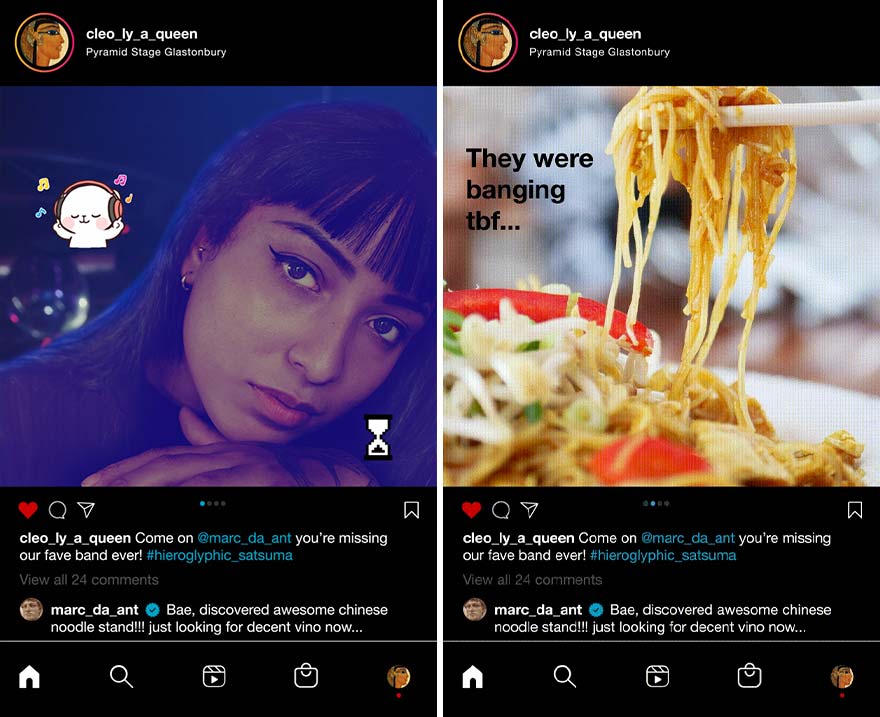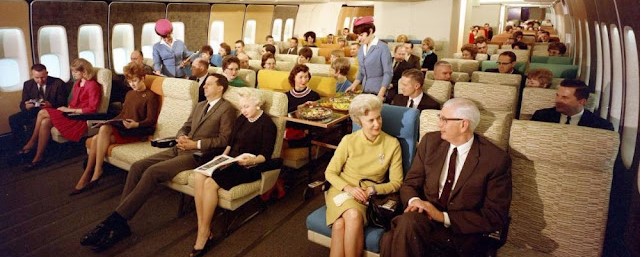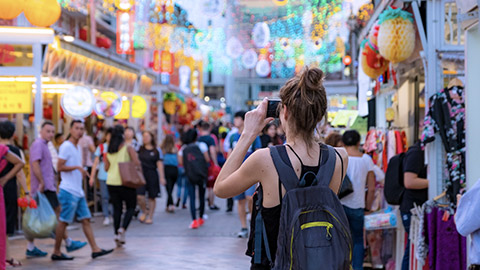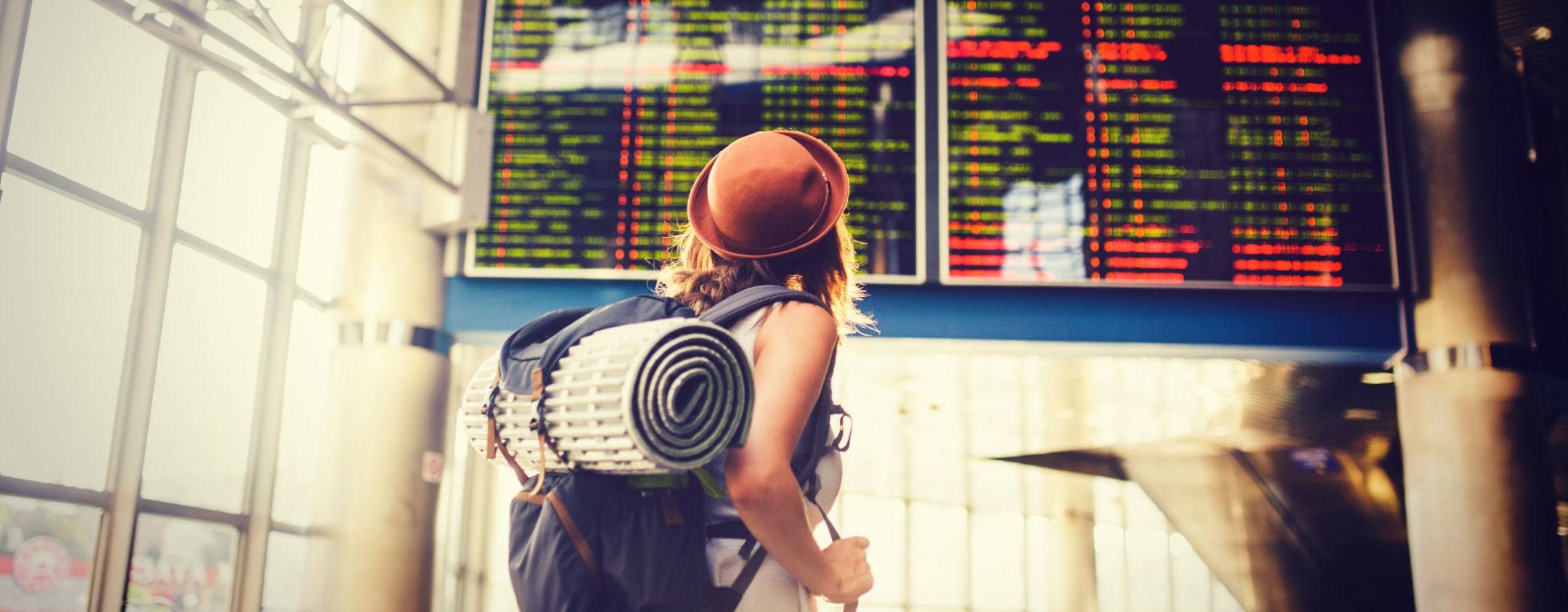About this module.
In this module, you will study the global tourism operating environment and its impact on tourism business operations and decision-making. These will be covered in the following topics:
- Global Tourism Operating Environment
- Case Study: The Walt Disney Company
- Business Operations of a Tourism Organisation
Using this knowledge, you will apply your understanding to an international case study. The Walt Disney Company, together with its subsidiaries and affiliates, is a leading diversified international family entertainment and media enterprise with five business segments: media networks, parks, resorts and attractions, studio entertainment, consumer products, and interactive media.
Details
| Expected Duration | 150 hours |
|---|---|
| Credits | 15 |
| Level | 5 |
| Assessments | 2 |
Outcomes
| Graduate Profiles | Learning Outcomes | Assessment |
|---|---|---|
|
GPO 3 Analyse and evaluate local, national, and international tourism operating environments in order to facilitate rational decision-making in the tourism industry |
LO1.1 Analyse key components of the global tourism operating environment to inform decision-making in the tourism industry (10 Cr) |
|
|
LO 1.2 Evaluate the impact of the global and local tourism operating environment on decision-making and change in an international tourism organisation (5 Cr) |
Throughout this Diploma qualification, you will be studying various tourism businesses to understand how they operate. The tourism companies we look at during this first course will be international examples with a particular focus on Walt Disney World. This is because The Walt Disney Company is an extremely successful, global brand. But before we begin to look at global tourism business operators, we should take a look back in time and consider how tourism began and also how the global tourism operating environment impacts business operations and decision-making.
Learning Activity: Origins of Tourism
In the Forum, 'Origins of Tourism', share your thoughts on how you think tourism started, and what impacted the growth of global tourism.

We can’t really tell exactly when tourism started, we have no Insta posts or Facebook selfies to look back on, but we do know that back in ancient times, people did travel for various reasons. But if they did have Insta, we imagine it may have looked something like this:

Initially, nations and empires (we’re talking Greek, Egyptian, Roman, and Ottoman etc.) sent their armies off across different continents to conquer lands and take control of trade routes and resources. As forces took over areas, they set up administration centres from which they governed their new lands. This meant that there was a need for government officials and communications to travel along routes to maintain contact and control. Inevitably, this opened up areas of the world and necessary travel changed course and gave birth to tourism.
Curiosity was amongst the factors that created tourism, but also people travelled for education, commercial trade and for religious pilgrimages, exploration and adventure – and none of that has changed in modern times. But it was this initial travel that necessitated the development of basic infrastructure like roads, food and lodging. With the arrival of more people came the need for entertainment and activities – for example the building of amphitheatres and arenas for gladiatorial games and contests. These would be classed as what we now call tourist attractions.
As the centuries ticked by, the explorers discovered more lands, more merchants travelled further afield, and people followed in their footsteps. Famously, Marco Polo travelled around Asia in the 13th century, in the 15th century Christopher Columbus landed in the Americas and Vasco de Gama sailed from Portugal to India. We are all aware of James Cook’s 16th-century expedition to map the Pacific, New Zealand and Australia and then came the era of the Grand Tour.
Between 1613 and 1785, the Grand Tour era played an important role in the advent of tourism as we know it. It became very fashionable for the wealthy and aristocracy in society to travel around Europe (mainly France, Italy, Germany and Switzerland) for a couple of years to learn about culture, art and science. It was seen as a status symbol and young men and women ‘coming of age’ travelled by carriage across Europe and would be chaperoned throughout their journey.
The advent of the industrial revolution between 1760 -1840 resulted in both technological advances in factory manufacturing processes and transport. But this also meant less free time as factory life and business management meant that long periods away from touring were no longer practical – even for the rich. The working-class man earning a low wage in factories worked 6 days a week with no time off for holidays.
It wasn’t until 1938 that the UK passed legislation that entitled the working class to minimum rates of wage and the right to one week’s paid holiday per year. New Zealand followed suit in 1944 when the Annual Holiday Act granted the right to two weeks of paid holiday to all employees.
This impacted enormously on the rise in global tourism.
Watch this video
It is about the history of tourism. (14:53)

Advances in technology in the 19th and 20th centuries created new roads and stagecoaches, sailing ships and passenger trains. Populations moved from rural areas to the cities to work in offices and factories and there was more free time available via these faster modes of transport.
One of the most famous names in the history of the rise of global tourism is Thomas Cook. He brought travel and tourism to the public and was the first to introduce a tour package which included travel, accommodation and food. In 1855 he took his first overseas tour from Harwich (UK) visiting Belgium, Germany and France. The modern package tour was born! Thomas Cook went on to become a household name in the travel industry of the 20th century amassing a chain of over 500 travel stores in the UK with its own airline and hotels. A casualty of the Covid pandemic, the company ceased trading in 2020.
In the 20th century, World Wars I and II forced many to travel overseas and at the end of both wars, millions of soldiers returned home with tales of the places they had seen. Many had the wish to return under better circumstances and share the experience with family and loved ones, or merely their shared stories inspired others to want to travel.
Next came mass-produced cars and, in the 1950s, accessible passenger jet travel was introduced. These two were undoubtedly the major catalyst that allowed people the freedom to travel and meant that journey durations became much shorter meaning people could travel further distances. Another contributing factor to the boom was the introduction of credit cards and the ease of travelling without the hassle of changing currency and carrying cash.
Check out the graphs below which show how tourist arrivals have increased since WWII. The figures are shown up to 2018 and are not showing the impact of the Covid-19 pandemic.
Chart 1 - International tourist arrivals per year by region
Chart 2 - International tourist arrivals per year by region

Many factors have contributed to the growth of the tourism industry since the 1950s. Here are a few:
- Greater affluence – people have more disposable income.
- Airfares – have become more affordable even to long-haul destinations.
- Leisure time – increase in paid leave days.
- Greater awareness – TV & social media travel programmes and blogs/vlogs.
- Cars – more ownership giving greater freedom.
- Internet – growth has allowed people to research destinations and make their bookings for flights and accommodation.
- Increased life expectancy - there is a greater number of older people travelling.
There has been a shift in holidays taken and the frequency people travel. The following have also played a part in the tourism industry's growth:
- Long-haul – faraway destinations have become more popular and available.
- Experiential tourism – people no longer just want to visit a destination; they want to experience local culture to its full.
- Short breaks – a growth in weekend breaks – city breaks and spa/pamper breaks.
- Winter sports – at one time this was exclusive to the rich but now attracts an increasing number of tourists for skiing, snowboarding and other winter activities.
- Resorts – a growth in purpose-built resorts with extensive facilities.
- Business tourism – before COVID 19 international business meetings and conferences saw a massive increase.
